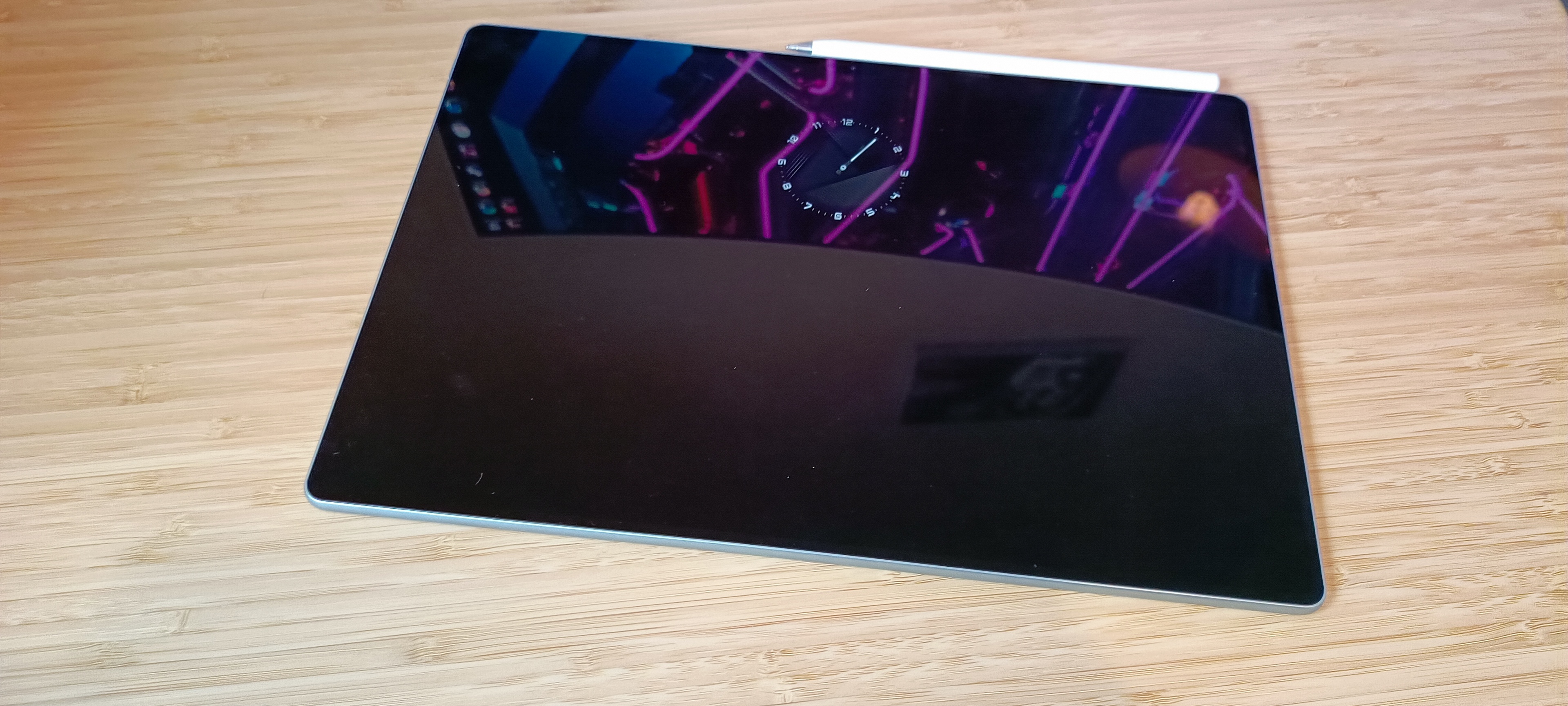
The Huawei MatePad Pro 13.2 enters a difficult market for anyone not named iPad. The world of tablets has been thoroughly dominated by Apple's iconic tablet, to the point where its name has become synonymous with tablets in general.
However, look for a little longer, and a rather interesting picture reveals itself, one where there is increasing competition, with growing confidence among some rivals that things could change. Samsung is one tablet maker leading this charge, and Huawei is another. In fact, many figures show Huawei as the second-largest tablet manufacturer behind Apple, and that's despite the US-enforced ban on Google integration with its software.
And in a display of this confidence, the brand-new Huawei MatePad Pro 13.2, RRP €999 at the time of its planned European launch, was sent to us on Creative Bloq for testing as a flagship tablet for demanding creatives.
At the time of this hands-on review, I have only had the MatePad Pro for a few days. Still, in that time I have tested creative and art software, watched media, listened to music, explored its app offering, tried its kids' profile using an in-house laboratory test subject (my kid), and run benchmarking software to test its computer and graphics processor. And I've come away rather impressed. But impressed enough to give the many iPad generations still on the market a run for their money, or command a place among the best tablets around today?
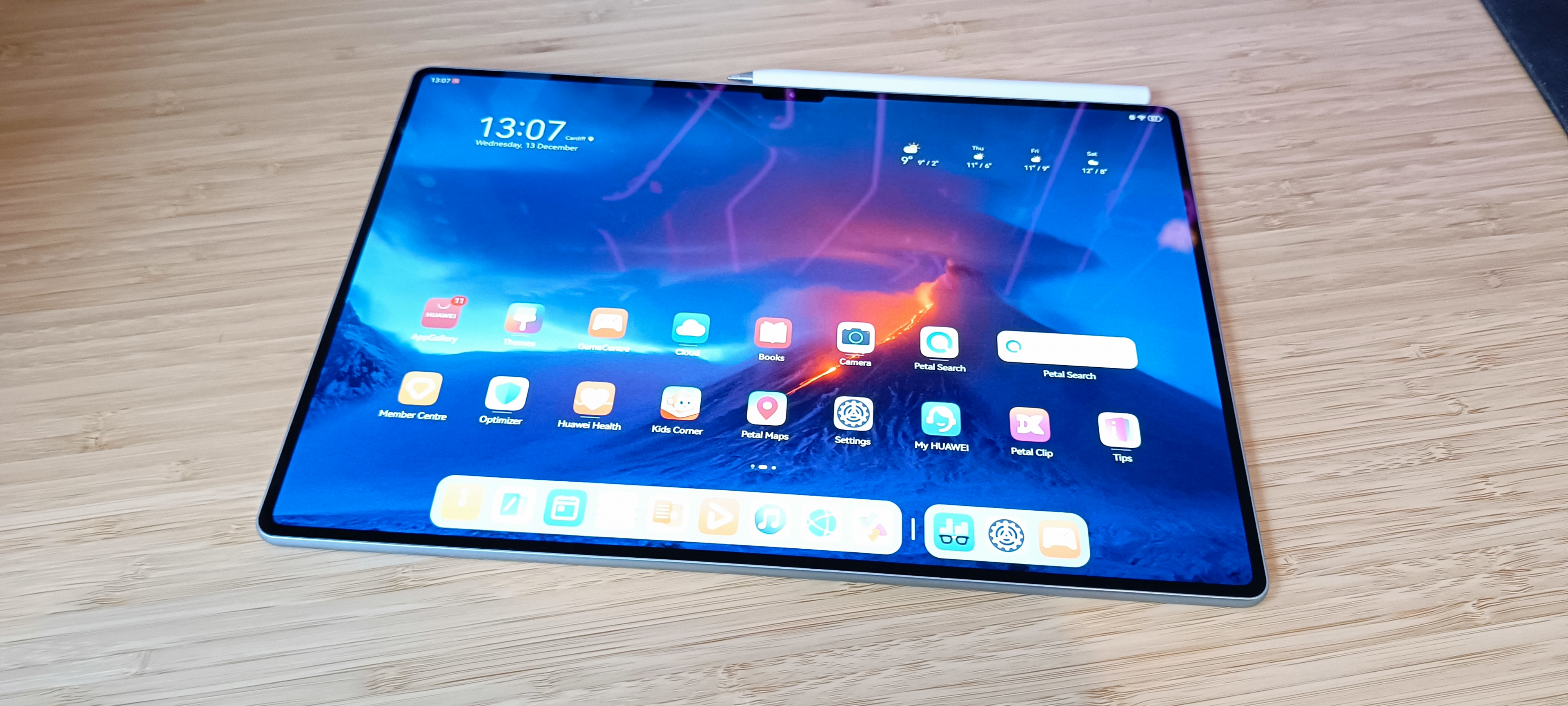
Huawei MatePad Pro 13.2 review: Key specifications
Huawei MatePad Pro 13.2 review: Design and screen
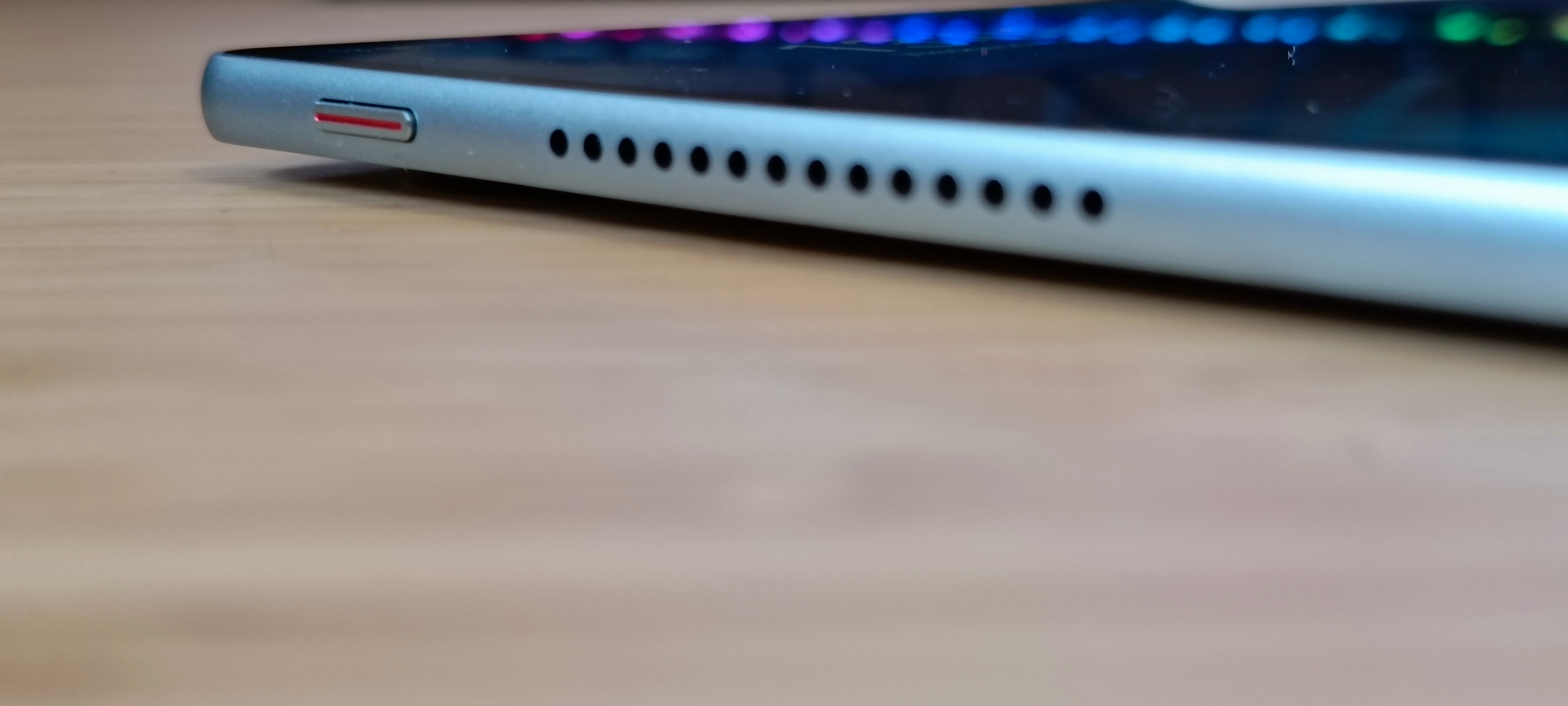
The first thing you notice about the Huawei MatePad Pro 13.2 is that the screen is big. Real big. At over 13.2 inches, it's a bigger screen than the iPad Pro 12.9, and it's an OLED display too, and the instant impression on switching the tablet on is that it's both bright and sharp.
The bezels are very thin, so thin, in fact that the MatePad Pro achieves about a 94% screen-to-body ratio. This does mean that your fingers or wrist will hover over the screen a little bit in many circumstances, but it didn't bother me too much.
It's lighter in hand than I expected, but that's because the maker has decided to opt for a plastic frame with a glass fibre back, instead of metal, but it still feels sturdy to the touch, with no flex in the body. This compromise, which won't really be noticed by most users on a day-to-day basis, weighs 580 grams, which is a good 100 grams less than the iPad Pro 12.9 (2022)
The screen continues to impress after being switched on too, with up to 1,000 nits of brightness coming closer to rivalling the top-specced iPad Pro 12.9, whose mini-LED reaches 1,000 nits (and 1,600 in HDR mode), while the other big-name flagship tablet, the Samsung Galaxy Tab S9 Ultra, only manages 600 nits of peak brightness. The resolution is impressive too, with a 2.8K screen capable of offering 2880x1920p of resolution, so the 262ppi is almost identical to iPad's much-vaunted screen.
Watching streaming video felt brilliant on this screen, with the OLED tech making the screen feel bigger than its already-ample 13.2 inches indicate. The refresh rate also outdoes that of both its Samsung and Apple rivals, with 144Hz on offer.
For this test, I was supplied with the stand and keyboard accessory, along with Huawei's M-Pencil, both of which are sold as optional extras. The stylus attaches magnetically to one side of the tablet, and the rear cover and stand clips magnetically onto the back, while the keyboard clips, again using the magical science of magnets, on the underside, which also charges it. You can use it without being physically connected to the tablet, too, using the Bluetooth connection, but it does mean you have to disconnect it manually when you want to return to all-tablet mode.
Set-up was really straightforward, the M-Pencil uses Huawei's NearLink software to pair and the keyboard pairs automagically too, and instead of feeling hemmed in by the Google block, Huawei has gone out and created its own suite of software to replace it.
There are two colours on offer, Green or Golden Black. I had the Green one, which looks more like a shade of pearly mint than outright green, but I like it.
Huawei MatePad Pro 13.2 review: Features

The Huawei MatePad Pro 13.2 comes equipped with an octa-core Kirin 9000S (7nm) processor, split into one 2.62 GHz Taishan Big, three 2.15 GHz Taishan Mid and four 1.53GHz Cortex-A510 cores. It comes with 12GB of RAM and either 256 or 512GB of storage. The model I had in for testing was the bigger 512GB one. In China, a 16GB RAM, 1TB version has been available, but I'm waiting to see whether that will be made available to Western buyers too.
Like other recent Huawei products, the MatePad Pro uses its own HarmonyOS, although that's built on the open-source code that underpins Android systems, so it will feel immediately familiar. In this latest iteration on the MatePad, though, I could see quite a lot of visual inspiration from iOS too, including where things can be find, the appearance of some menus and the way apps are laid out, along with some gesture controls that feel similar to iOS too.
Because there is no Google support, we don't have the Play Store or the Google search engine here, for example. Instead Huawei offers its own AppGallery and Petal search engine, and through searching the AppGallery, you can also be led to APK download files for a great variety of Android-friendly software. I used that to download streaming apps such as Disney+ and creative software too, including Autodesk Sketchbook, and once downloaded and installed, it all works just as it would on an Android or iOS tablet, although this is limited to software that's free to download (retaining the legality of what we're doing), so unfortunately you can't get things like Photoshop this way (but you can get Lightroom).
Some mainstream games are available too, including PUBG Mobile, The Walking Dead: Survivors, Devil May Cry, Monopoly Go and more, but I also had great fun looking through Huawei's generic-name replacements for some games (Sniper Assassin! Stumble Guys! Grand Theft City! And so much more).
The battery on board is a 10,100 mAh offering, a little smaller than the one you find in an iPad, and the efficiency of it seems to lag a little behind that too, although I have found battery life mostly very acceptable so far.
It's charged via a USB-C cable, which is included in the box in case you're not in the enviable/increasingly concerning position I'm in, where I have a box with literally dozens of those now...
I've mentioned the removable chiclet keyboard and M-Pencil above, which are optional extras, but do add considerably to the user experience and feature set of the MatePad Pro.
The speakers are equipped with the company's own Huawei Sound hardware and software, and as you can read below, performed excellently for tablet speakers.
Huawei MatePad Pro 13.2 review: Performance
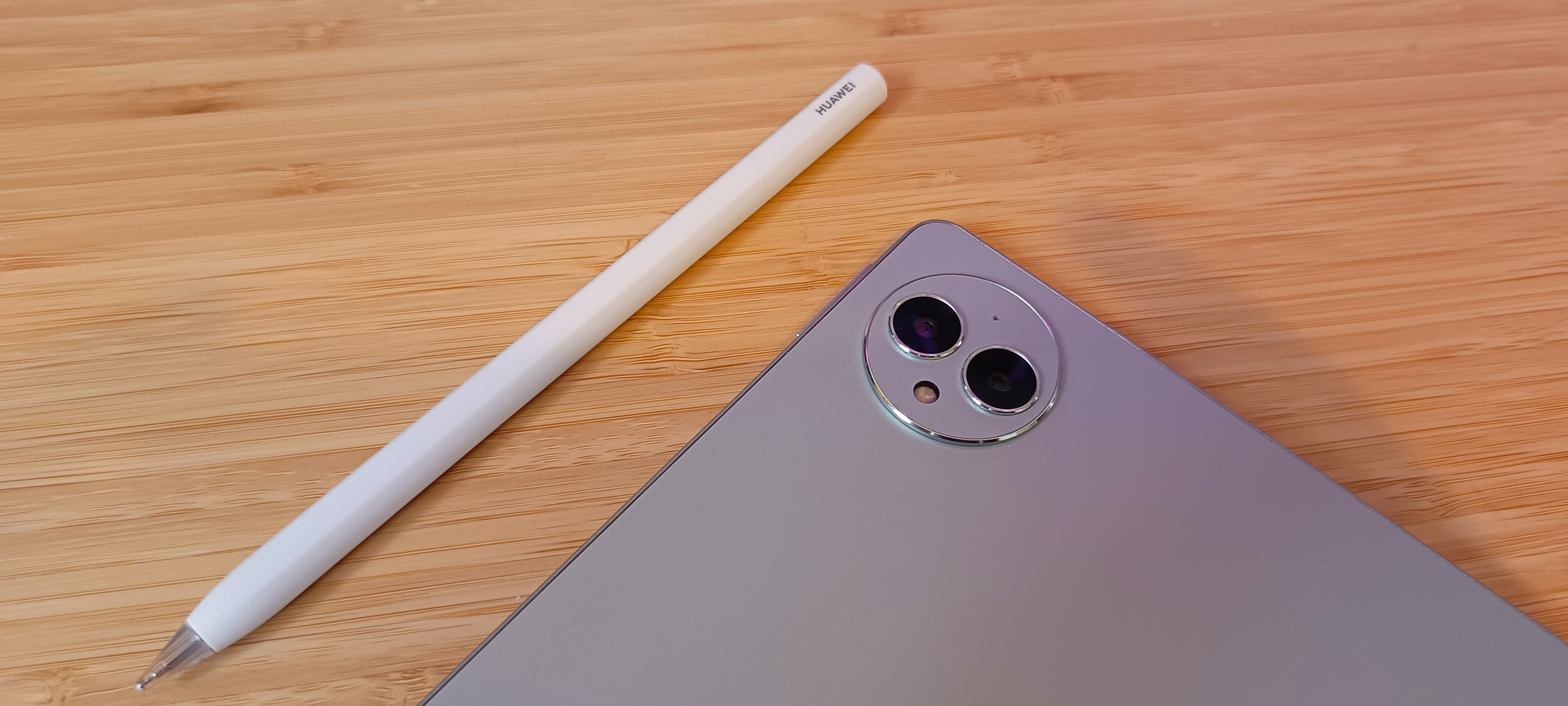
Benchmark testing revealed that while the Kirin 9000 processor doesn't quite match the grunt of the iPad's M1 or M2 processors, and it doesn't reach the lofty heights of the Samsung Galaxy Tab S9 Ultra either, but it beats out the 9th-gen iPad's A13 Bionic processor and so far, I've found it more than capable enough to handle several creative apps being open at the same time, as well as offering lag-free streaming HD video via my home Wi-Fi.
The GPU score, however, is a bigger cause for concern, as the numbers I achieved were considerably lower than both the competitors are able to produce, and lower than I expected from a flagship tablet in the £1,000 range. As this is an early test, I'm not sure whether this was an outlier or not, so will continue to test the graphic prowess of the tablet in the coming weeks, although some other reviews online seem to be noting similar results.
That said, drawing, note-taking and photo-editing has so far been a fairly great experience for me, with the M-Pencil performing brilliantly on the responsive OLED touchscreen. It may lack a little bit in texture response, but that comes down to personal taste.
Therefore, it looks like the MatePad Pro is somewhat less than 'pro' when it comes to 3D processing or video-editing.
The camera array, which consists of a 13MP wide-angle and 8MP ultrawide lens on the back, and a 16MP selfie camera on the front, is nothing to write home about, but the front-facing camera is good enough for video calls at work, and the microphones seem to pick my voice up very clearly too.
The speakers are real performers though. Online results show 'excellent' sound quality results and when listening to music or watching films and streaming television, I tend to agree. There is a surprising depth and impressive volume on offer here, with very little distortion, which would put this in premium streaming tablet territory. It certainly outperforms most laptop speakers in terms of sound quality, which is an impressive feat for such a thin construction.
Battery life seems to be largely in line with the expectation from the 10,100mAh battery, i.e. slightly lower than a comparable iPad or the flagship Samsung Galaxy Tab 9, but it lasts me for a couple of days of fairly consistent use so far. The advertised charging speed from empty to 85% in 40 minutes seems fairly accurate too, as the 88W charger juiced the tablet up very quickly for me.
Huawei MatePad Pro 13.2 review: Price
The initial RRP in Europe for the Huawei MatePad Pro is €999 for the 256GB version and €1,199 for the 512GB one. However, the latter has the keyboard included in the purchase, and as that's sold separately for €199, it makes that the preferred option in my eyes. The brilliant M-Pencil retails for €99, and if you don't have a stylus, I highly recommend getting that, as it enhances the user experience of the tablet massively.
Should I buy the Huawei MatePad Pro 13.2?
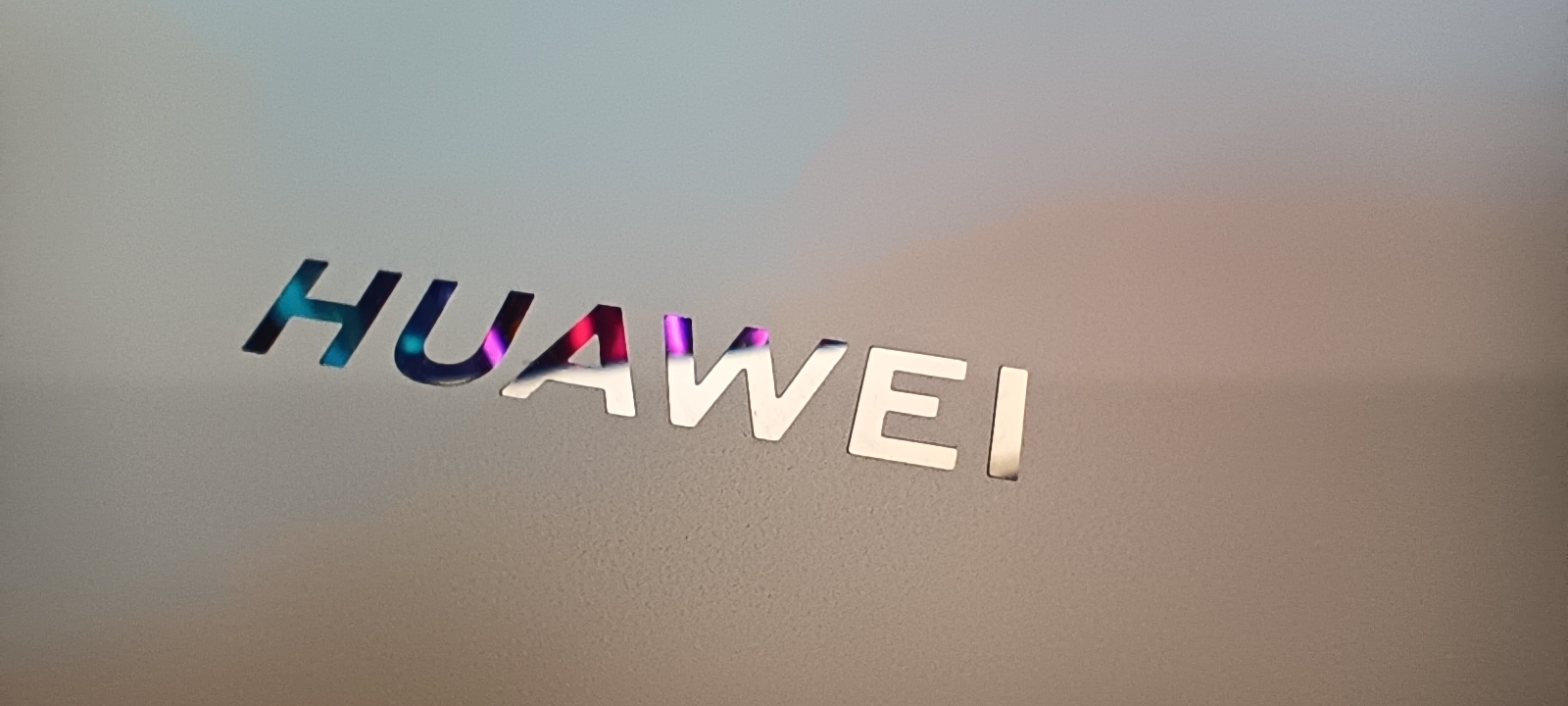
It's still very early days for the Huawei MatePad Pro 13.2, both in my testing and its existence on the Western market, but it's seemingly a hit in China since its release there in September. And despite it lagging a little behind Apple and Samsung's flagship tablets in terms of outright performance, it's extremely pleasant to use and the fantastic 2.8K OLED screen makes it a real multimedia performer too. If you can't work around the Google limitations of the device or you're looking for more graphical grunt, I recommend either going for one of the rivals, or just take the step up to a 2-in-1 laptop, as the MatePad Pro isn't exactly cheap (yet, at least...),







